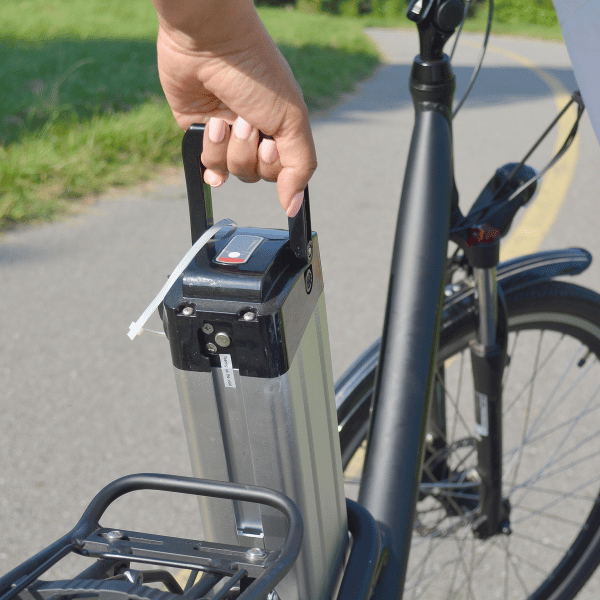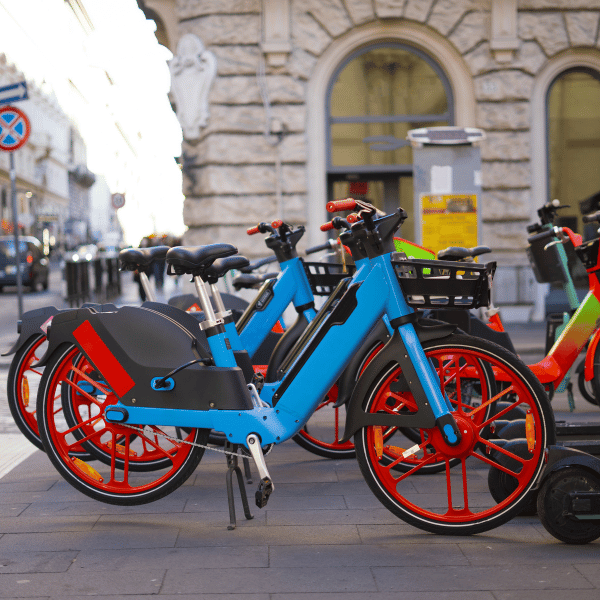How to Choose the Right Battery for Your Electric Bike?
Maximize your riding experience by understanding electric bike batteries’ technical specifications and requirements. Factors such as voltage, capacity, weight, and charging cycles are analyzed in the selection process to fit specific conditions. After going through our comprehensive breakdown of considerations and advice on battery performance evaluation, you will be ready to go for a battery that not only meets but surpasses efficiency and durability expectations one may have. Keep reading as we bring it all together in order to use the right battery choice for unlocking the full potential of your electric bike.
Understanding Electric Bike Batteries
To optimize your electric bike’s performance, choose the right battery type. This will then be followed by a discussion of different batteries where each has its own characteristics and advantages so that comparisons can be done later.

Various Lithium-Ion Battery Options
Lithium-ion batteries are the industry standard in electric bikes because they have superior warranties, excellent energy densities, high power outputs among other things making them ideal for most e-bike fans. Besides affecting range this is often expressed in watt-hours per kilogram (Wh/kg) which is a measure of energy density; cycle life which indicates how many charge-discharge processes a cell can handle before its capacity starts significantly degrading; and finally the voltage relating to power output are known key parameters. It is due to these reasons that lithium-ion batteries have become versatile and efficient enough to suit any e-biker today.
Comparison between Lead-Acid vs Lithium Batteries
Lead-acid versus lithium batteries can be compared along three major lines: weight, performance, lifecycle. The heavier lead-acid batteries may influence maneuverability and overall comfort while using an e-bike. In terms of performance however lithium batteries have greater energy densities giving them long ranges at high speeds too. Lastly but not least lithium batteries offer much more charging cycles thereby assuring longer useful lives as well as savings over time.
Variables to Think about When Selecting an Electric Bike Battery
Choosing the best-suited battery is important if you want to make the most out of your electric bike. This guide will outline some of the things that you should take into account so as to make a well-informed decision such as capacity, voltage requirements and energy density.

Knowing What Battery Capacity Is Right For You
Battery capacity is measured in ampere hours (Ah) and it determines the distance your e-bike can travel. To identify the right capacity, first consider how far you typically ride, whether there are hills or not, if pedal assist is available or if you can just go full electric. A higher Ah means more range but also increases weight and cost.
Understanding Voltage Requirements
Voltage plays a role in determining how much power and speed an e-bike will have. Standard voltages include 36V, 48V, and 52V among others. Higher voltages provide better acceleration and can carry heavier loads making them ideal for mountain bikes or cargo e-bikes while lower ones are good for commuter bikes. For optimum performance match the voltage with motor requirements of your e-bike.
Considering Energy Density for Longevity
Energy density is expressed as watt hours per kilogram (Wh/kg) shows both how long-lasting a battery is and its range too.. Greater energy density gives lighter batteries with longer ranges which are essential for people commuting over extensive areas or taking long trips. Also it tends to imply longer overall life of a battery that safeguards your investment too.
How to Select the Right Battery Management System for Your E-Bike?
A battery management system (BMS) is essential in preserving the life and efficiency of your e-bike’s battery. It manages charge cycles, temperature, and voltage fluctuations, thereby preventing overcharging or deep discharge, which extends the battery's lifespan.

Comparison among Different Battery Management Systems
In comparing BMS options, you should take into account their compatibility with the various chemistries of batteries such as Li-ion, LiFePO4, etc., voltage range, and maximum charge/discharge current. One may also want to consider systems that come equipped with thermal management to enhance safety and ensure longer service life. A system that can balance individual cells makes all cells wear down evenly hence extending the overall battery lifespan.
Increasing Battery Life through Effective Management
For optimal battery life select a BMS that provides adequate information about use and can be adjusted as desired. Some parameters like voltage cutoff threshold and temperature levels are adjustable. Sleep modes that do not consume much energy during idle time are useful in efficient systems. By proper management using advanced BMS you will considerably improve your e-bike’s performance together with the duration its battery lasts
Here Are A Few Things To Keep In Mind When Maintaining An Electric Bicycle Battery?
The duration of an electric bike battery's life is essential in enhancing performance and cost effectiveness. This section highlights the most important ways of maintaining the battery's good health, which will enable it to serve you for a long time without any difficulties.

Proper Charging Techniques for Lithium-Ion Batteries
Lithium-ion batteries can be optimized by avoiding discharging them completely before recharging. A charge level within 20% - 80% can greatly increase service life. Moreover, using the charger suggested by the manufacturer and not charging it under extreme temperature could help to prolong its usage time. Those simple practices prevent the battery from stress which leads to earlier degradation.
Regular Maintenance to Extend Battery Life
In order to keep up with regular maintenance, keeping your battery clean and dry, checking for loose connections as well as storing it in cool dry areas when not in use is vital. Exposing the battery to extremely high or low temperatures will negatively impact on its effective functionality. In addition, occasionally allowing the battery to fully discharge and then fully recharge it helps recalibrate such devices so that they do not provide false information about their remaining lives.
Common Missteps to Evade When Buying an Electric Bike Battery
The correct electric bike battery choice is key for optimizing performance and lifespan. This part outlines some of the common mistakes that buyers make, helping you to make informed choices.
Underestimating Battery Type Importance
Choosing the wrong battery type can substantially affect the efficiency and range of your e-bike. Some of the factors you need to consider include; battery chemistry (Li-ion, NiMH, Lead-Acid), capacity (Ah), and voltage (V). Li-ion batteries are usually the best when it comes to achieving a balance between weight, capacity, and long life which most users need.
Neglecting Charging Requirements per Different Battery Packs
Every battery pack has specific charging requirements which if ignored may shorten its life span. Key parameters consist of charger's voltage and amperage compatibility as well as ambient temperature during charging. It is therefore essential to use a charger that has right voltage and amperage as well as avoid extreme temperatures during charging so that there’s no physical damage to batteries.
FAQ
Q: What batteries are available for electric bicycles?
A: Several battery types are typically employed in electric bicycles, including lithium-ion, lead-acid, lithium manganese, cobalt, and ion.
Q: How can I choose a suitable battery for my electric bicycle?
A: When choosing an e-bike battery, some factors to consider include the type of battery, its capacity, voltage and compatibility with your e-bike model.
Q: Which is the best E-bike battery that stays longer?
A: Generally speaking, the best e-bike battery that lasts long would be a lithium ion battery which has high energy density and even power output.
Q: How do I maintain or take care of my e-bike batteries?
A: To keep your e-bike batteries in top shape always ensure to charge them fully, avoid overcharging, store them in cool dry places and adhere to company’s maintenance guidelines.
Q: How important does the charger play the role in maintaining healthy batteries?
A: Charging systems play an important part in keeping batteries healthy; they must supply the correct voltages/currents for charging processes, prevent overcharging, and maximize battery life.
Q. Are Lithium Ion Batteries commonly used as e-bike battery types?
A. Yes, because they have high energy density; light meaning less load on the bike frame hence better performance and reliability even at low charges.
Q. Major components found within an electrical bike’s battery pack includes what?
A. A typical electric bicycle’s battery pack consists mainly of connectors; cells (batteries) and a protection system such as BMS plus casing for support sturdiness.
Q. What ways exist to tell how much energy a stored cell can deliver before it goes flat?
A. The amount of electricity that can be discharged out of any given cell is measured in watt-hours (Wh) whereby you multiply its voltage rating by the current rating expressed in amp-hours (Ah).


